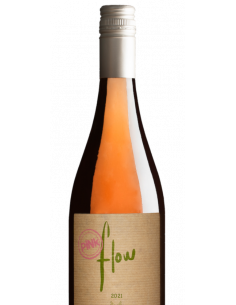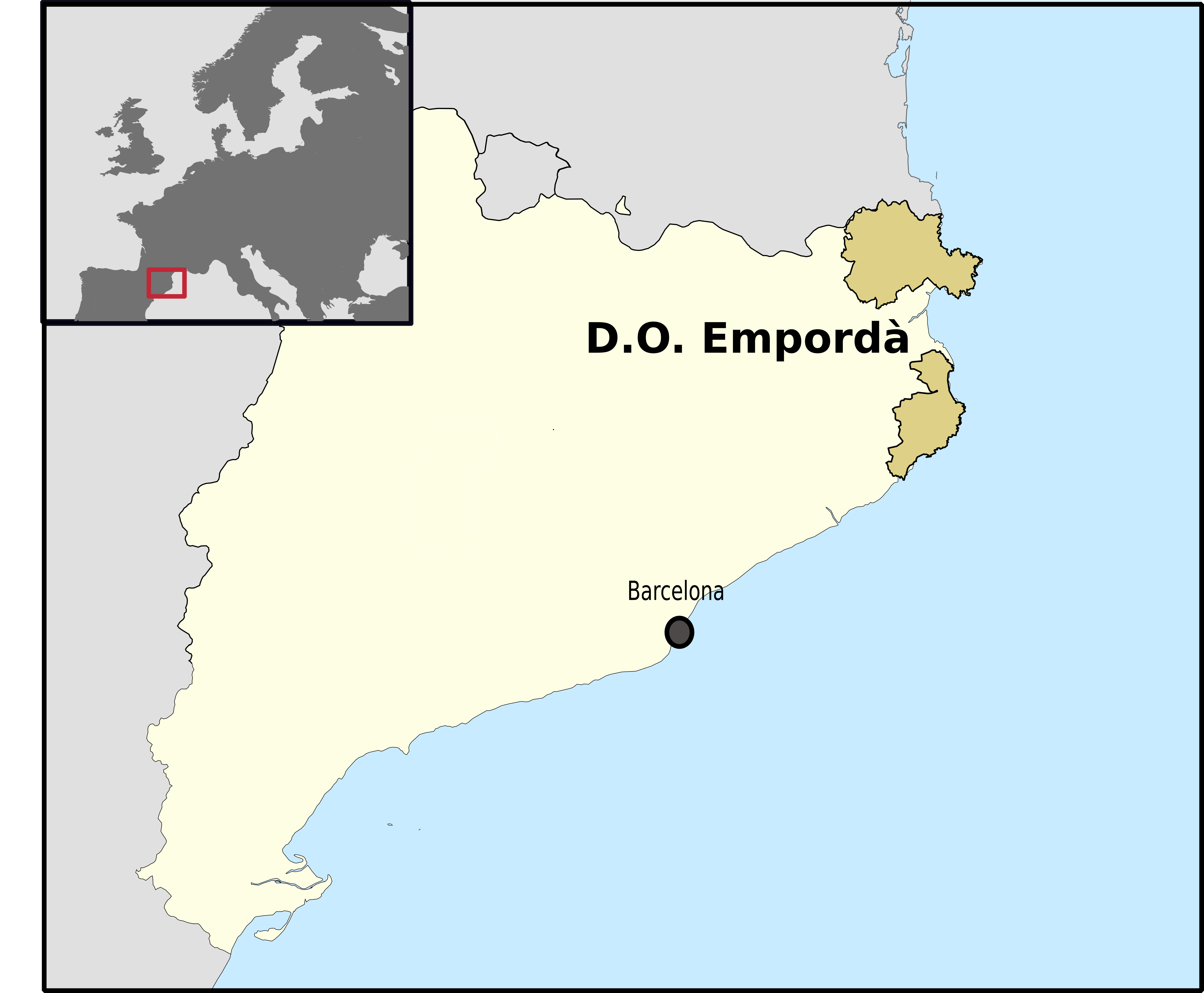The Empordà is a land of great scenic beauty, with several protected natural areas and a spectacular coastline with its beaches and coves, and also enjoys a great historical and cultural heritage: there are menhirs and megalithic monuments, Gothic architecture, Romanesque art, charming villages, the surreal art of the genius Salvador Dalí… A whole set of attractions to which must be added its people and good gastronomy, with the particular Empordà cuisine and the new restoration represented by figures such as Ferran Adrià , an ideal complement to the wines of the DO (designation of origin) Empordà.
The Empordà Designation of Origin, D.O. Empordà has been regulated since 1975, it was called "Empordà-Costa Brava" but in the last approved regulation, on February 16, 2006, the indication of Costa Brava has been removed. The DO Empordà occupies 2,020 hectares of vineyards in the Alt and Baix Empordà. There are 423 winegrowers and 45 wineries registered with the Regulatory Council. In 2013, the estimated production of wine covered by the DO was around 50,000 hectoliters, which represents a total of 3.5 million bottles per year. Ten white and ten red varieties are grown: white grenache or white hawthorn, macabeo or viura and Alexandria muscatel are the predominant white varieties, and samson or carignan and black grenache or black hawthorn are the preferred red varieties. . The monestrell should also be added, as all the viticulture and ampelography treatises place in the Empordà.
Viticultural tradition
There is no doubt that the culture of wine and the knowledge of the trade of the product of the vine reaches Catalonia in about the s. VI BC thanks to the most important Greek colony in the country, Empúries, a city that, over the centuries, will give its name to the whole region of the Empordà. Four centuries later, there is already archaeological and documentary evidence that the wines of the territories of Emporiae and other parts of the Tarraconense are known in the internal markets, in other provinces of the Roman Empire and in the metropolis itself.
In the Middle Ages, when the vineyards grew up around abbeys and monasteries, the slopes of the mountain of Rhodes were staggered by bundles planted with vines under the protection of the monastery of Sant Pere de Rodes, in which it seems that it excelled. To read in the art of making wine the winemaker monk Ramon Pere de Noves, to whom a treatise on this subject is attributed. Sant Quirze de Colera or Santa Maria de Vilabertran are also listed as owners of vineyards in the Empordà.
In the 18th and 19th centuries, the vineyard showed its colonizing capacity and symbolized the agricultural impulse translated into a significant population growth in its cultivation area and the formation of its own landscape of cypresses, fences, huts and stone beams. dry. The Phylloxera plague, which appeared in a vineyard in Rabós d'Empordà, before in any other Catalan vineyard in 1879, completely ruined this prosperous period of Empordà wines. The resumption is tough; he never recovers the land he had occupied before the plague.
The beginning of the movement of cooperative wineries, promoted by the Commonwealth first, and then by the Republican Generalitat around 1930, opens a new stage that allowed to join forces in improving the quality of the winemaking process. , building new wineries and improving the marketing system. Likewise, private initiative soon joins these efforts and quality Empordà wine is beginning to be known and appreciated in many markets.
Geography
The Alt Empordà production area is located at the north-eastern end of Catalonia (from the city of Figueres to the north on the border with France) sheltered at the foot of the Rhodes and Albera mountains. , in an arch that goes from Cap de Creus to the so-called Garrotxa d'Empordà. It is therefore bordered by the Pyrenees to the north, the Mediterranean to the east and the plain itself to the south.
The Baix Empordà production area is bounded on the north by the Montgrí massif, on the southwest by the Gavarres massif, which forms a coastal plain with the Begur massif, and on the east by the Mediterranean.
The vineyards are on calcareous soils ranging from sea level to 200 m altitude. Vineyards predominate on terraces raised with dry stone on steep slopes. The climate is Mediterranean, warm and humid, with humid winds from the south and cold from the north, particularly the strong north wind.
The Empordà area is an ancient wine culture. Rhode and Empúries are traditionally considered to be the gateways through which the Greeks [3] introduced the cultivation of the vine to the peninsula, around 600 BC. The winemaking tradition continued with the Romans and medieval monks.
At the end of the 19th century, it was the first region of the peninsula to suffer from the phylloxera plague from France. Many vineyards were replaced by cork oaks, becoming the main area in the world in the production of cork stoppers, an industry closely linked to winemaking.
In 1929, the first cooperative winery in Espolla was set up, making wine renovation possible. In 1975, the Empordà - Costa Brava Designation of Origin was set up in the Alt Empordà. In March 2006, the regulations of the Regulatory Council were amended, the production area in the Baix Empordà was extended and the term Costa Brava was abolished.
Vinification
The range of Empordà wines is very wide. Red wines are of high quality, full-bodied, well-formed and harmonious, sometimes with the nuances of careful aging. These reserve and aging wines have very characteristic aromatic notes; they are complex, fragrant, with hints of spice, always maintaining aromas of fruit and plant. Once in the mouth they are fully expressed, tasty and very pleasant.
White wines are made here, often with local, fresh and tasty varieties, as well as other monovarietals with a remarkable quality.
Also rosé wines that are characterized by a well-defined cherry color, with great personality and delicate, fresh aromas with a moderate alcohol content.
The Emphatà Grenache wine stands out, a fortified traditional sweet liqueur wine made with a minimum of 90% Grenache according to the straw wine technique: the grapes are left to dry on the straw before being pressed. Generous, with the taste of the same ripe, warm and silky grapes, virtues that give it the characteristics of an exceptional dessert wine, along with the other natural sweet wine typical of the area, the Moscatell de l'Empordà.
The expansion in the Baix Empordà has opened the range to full-bodied red wines, with the recommended traditional varieties of samsó and lledoner (local name of Grenache reserved for liqueur wine), and with authorized innovations of Merlot, Cabernet Sauvignon, Cabernet Franc, Monastrell, Tempranillo and Syrah.
The recommended traditional white varieties are white hawthorn (or white Grenache), red Grenache, Macabeo and Alexandrian Muscat. Chardonnay, gewurztraminer, malvasia, small grain muscat, white picapoll, white sauvignon and xarel·lo are also allowed.



























